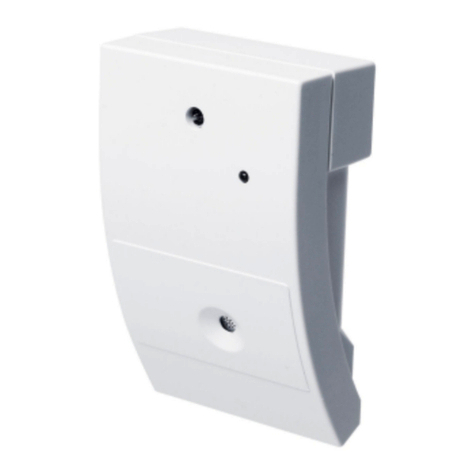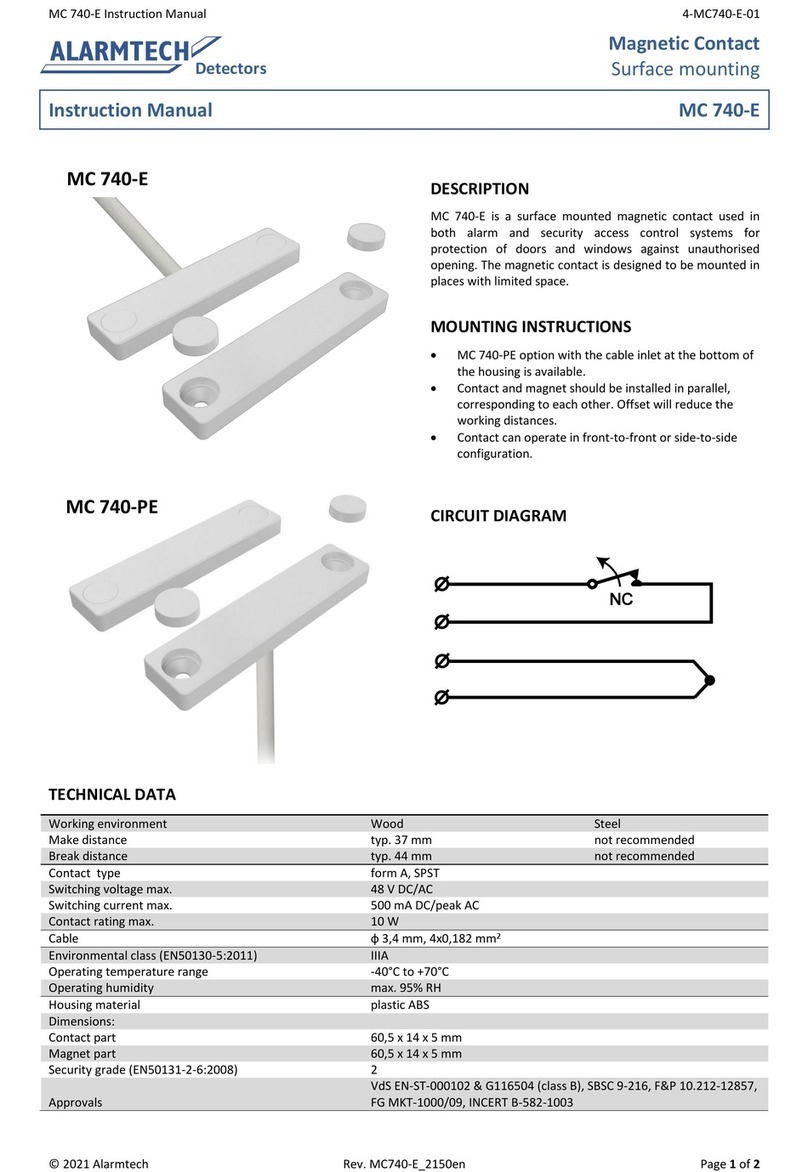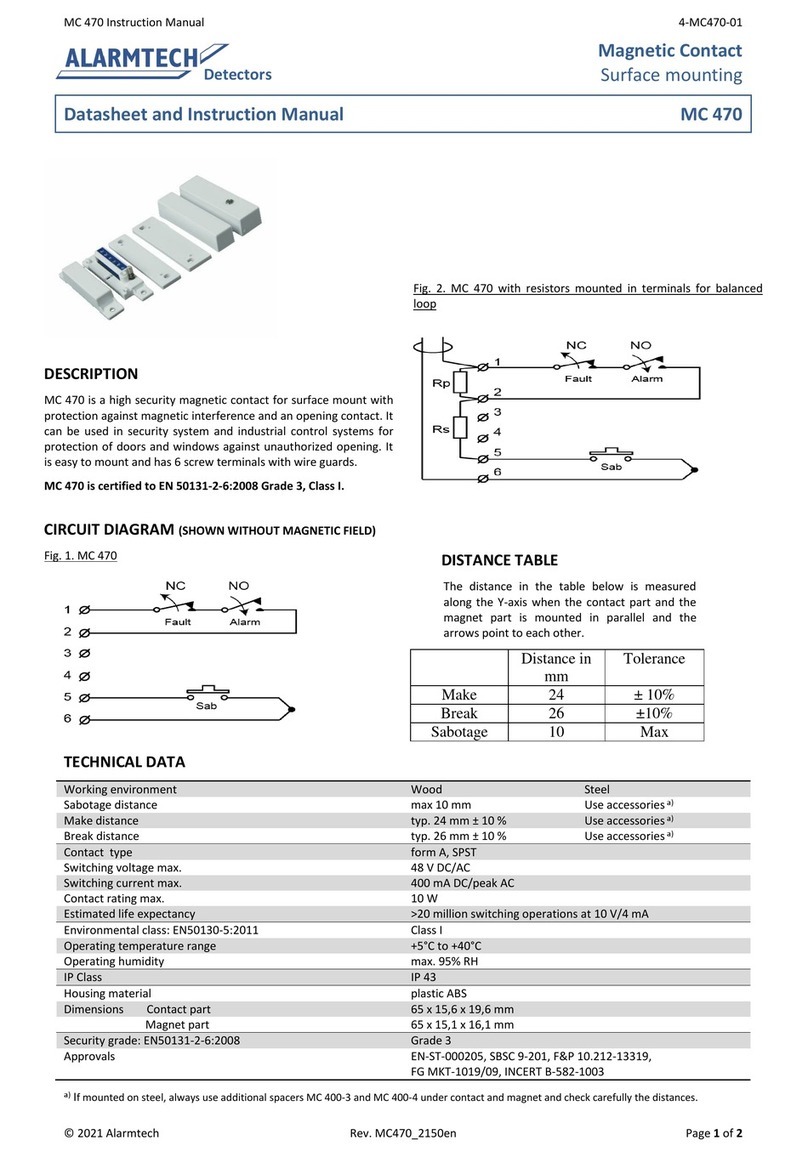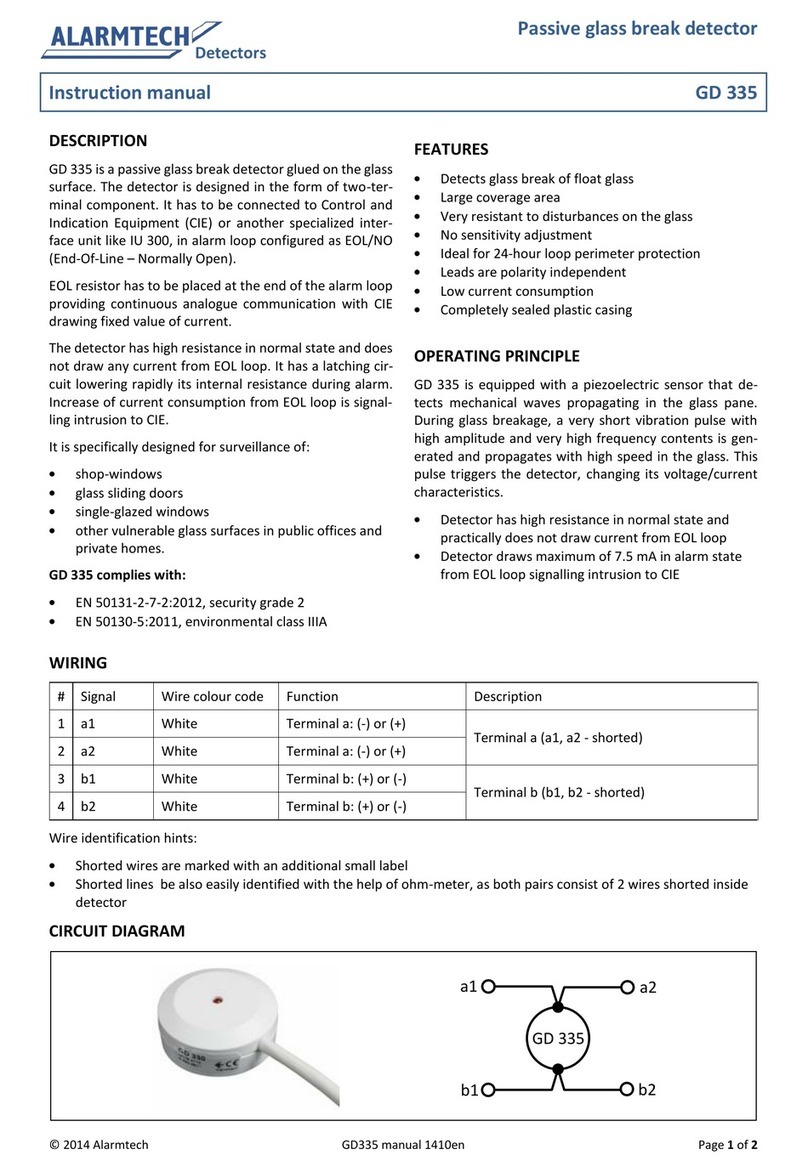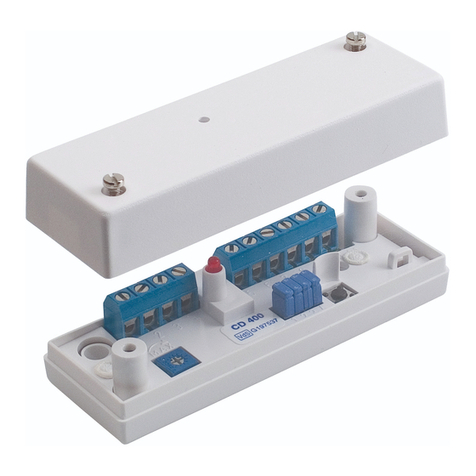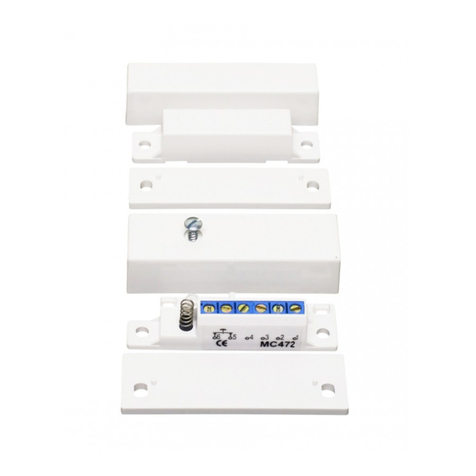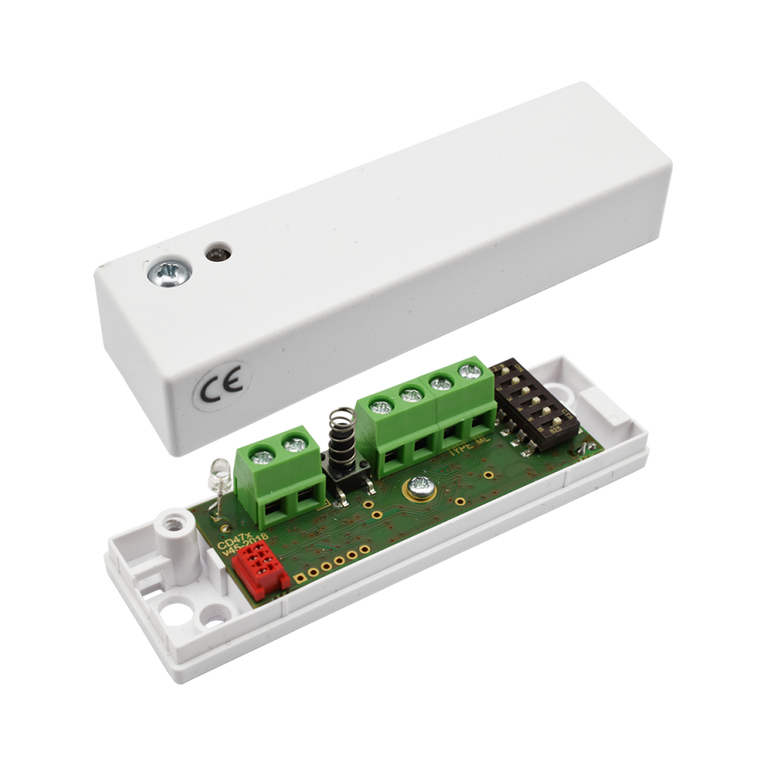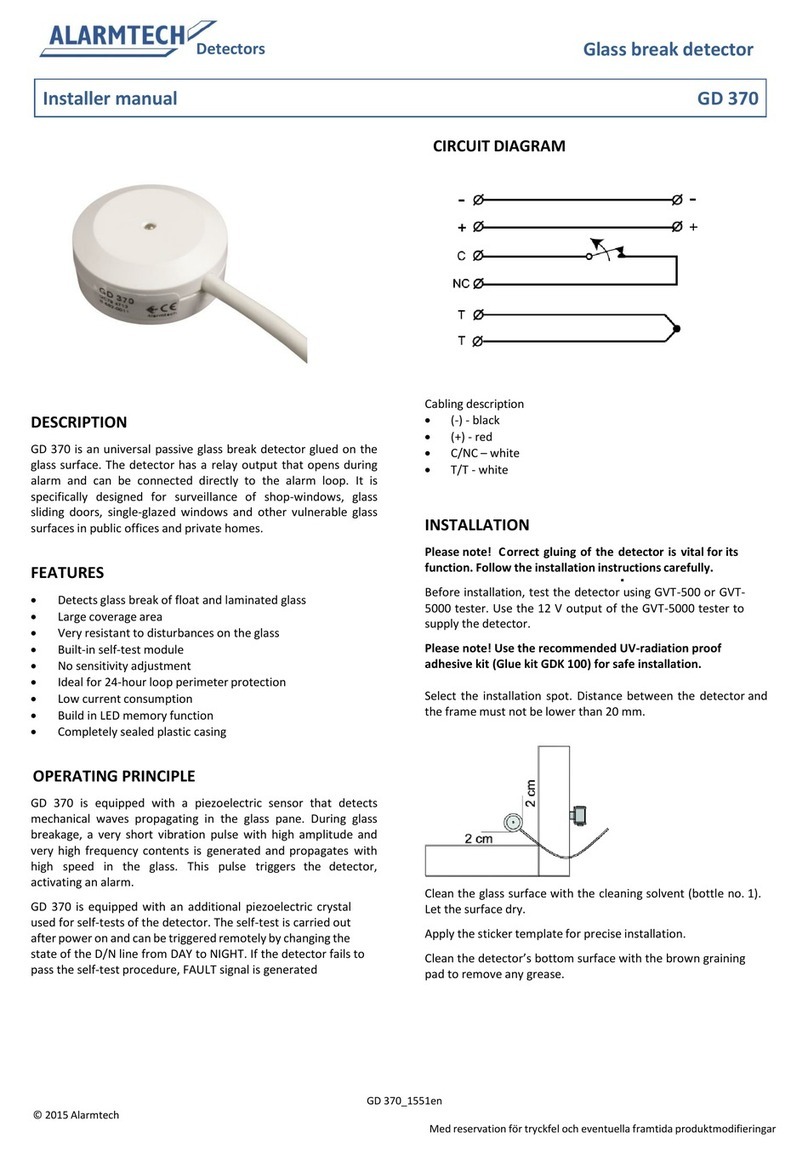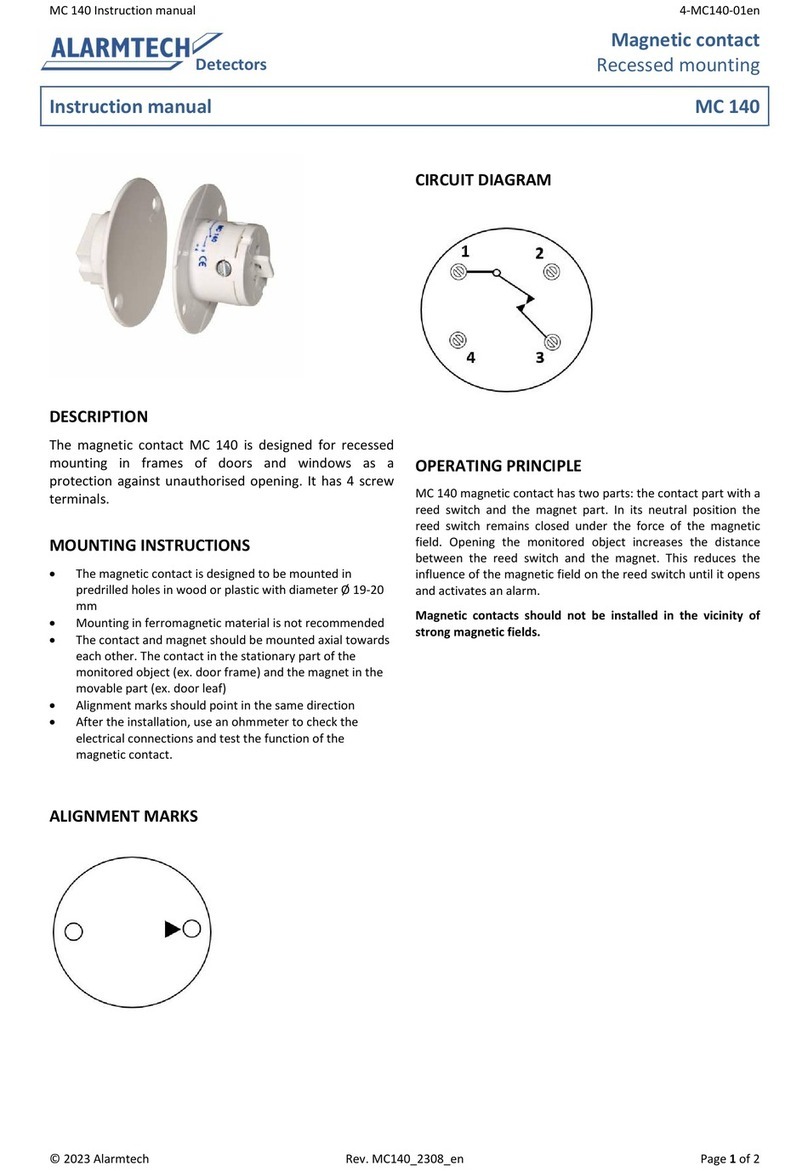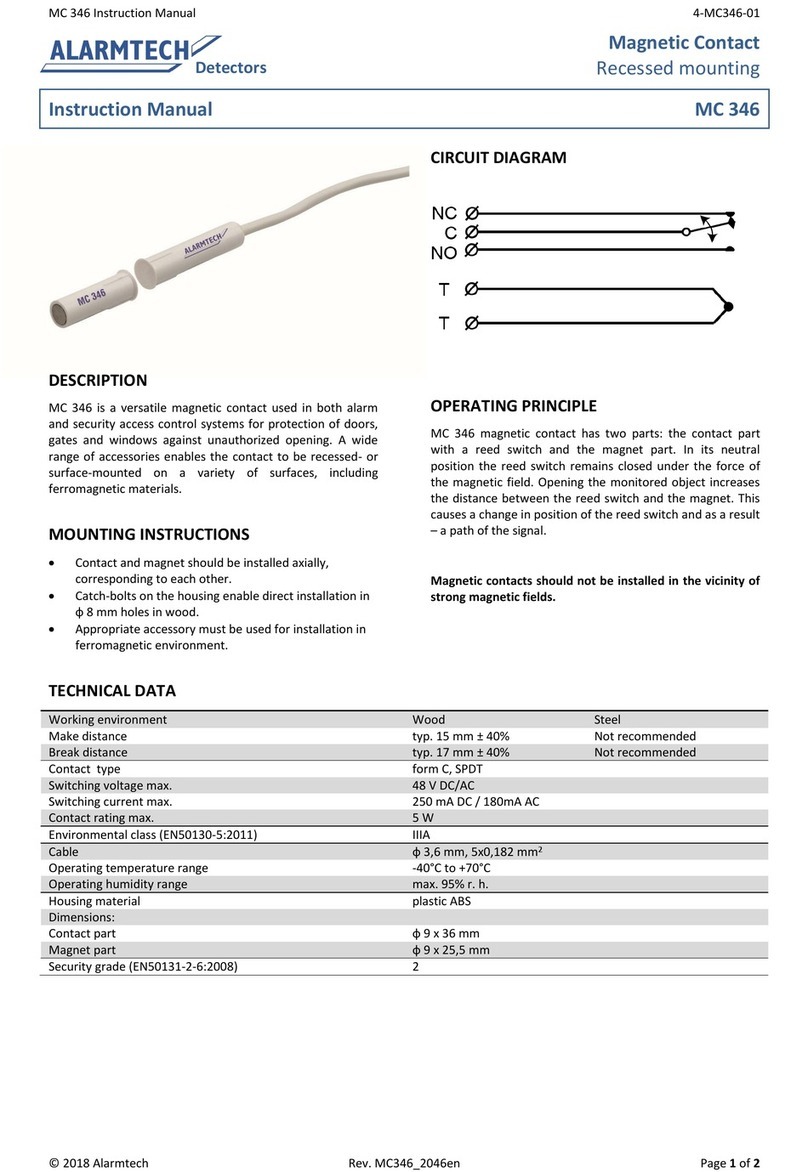© 2016 Alarmtech –www.alarmtech.se 3 / 4 AD800-AM manual nh1643a_en
SUGGESTED SETTINGS OF THE DETECTOR DEPENDING ON WINDOW DESIGN AND TYPE OF GLASS:
Check the window constructions and note what kind of glass is
used and especially in the pane closest to the room.
Single glazed (float & tempered) –Set the detector at the
measured distance from the glass to the detector.
Double glazed (float & tempered). If there are high disturb-
ances in the surroundings –set the detector at the measured
distance from the glass to the detector. At normal or low dis-
turbances –the detector shall be set at Zone 1.
Double glazed where the inner pane is covered with security
film –Set the detector at Zone 1 apart from the measured
distance.
Triple glazed (float & tempered) –Set the detector at Zone 1
apart from measured distance.
Laminated glass –Set the detector at Zone 1 apart from the
measured distance.
CHECK THE SETTINGS WITH ADT 700 TESTER
If the detector is placed too far or too close from the glass, it will
not respond. At DRC testing the LED of the detector will flash 1, 2
or 3 times to show it is in a certain Zone. If it does not flash a
better place must be selected.
1. Put the cover on and make sure it hooks properly into the
base of the detector.
2. Apply power - LED will now indicate your range setting by
blinking 1-3 times.
3. Use ADT 700 to test and calibrate the detector for optimal
position.
TESTING AND CALIBRATING
ADT 700 tester is a specially developed tool for calibrating and
adjusting the detector AD 800-AM for optimal function in the
acoustic room –the DRC Digital Room Compensation procedure.
When testing the detector settings you do not need to open it
again as the tester will communicate with the detector acousti-
cally. Never test the AD 800-AM with a cover disassembled from
a base. Make sure the cover is fastened properly.
Caution: Do not use the ADT 700 tester in proximity to your ears
as the tester produces loud noises.
DIGITAL ROOM COMPENSATION PROCEDURE
Prepare the acoustic detector for DRC by setting the D/N line (if
used) in DAY mode –D/N line should be left open or Low.
1. Press the START button of the ADT 700 tester to put the
power on. Green LED will light.
2. Hold the tester 1 to 3 m from the detector and aim the
speaker at it.
3. Press the START button once more to initiate the DRC mode.
The LED on the detector will start to flicker.
4. Go to the furthest distance (max. 9 m) of the glass to be pro-
tected and aim the speaker at the detector.
5. The DRC range calculated by the detector will be displayed
as a number of pulses from 1 to 3.
Press the DRC button to send a DRC signal out. Make this 2-10
times from different angles of the protection area for optimal ca-
pability. The LED will flash confirming it has received the signal.
The LED will then start to blink and flicker. The DRC range calcu-
lated by the detector will be displayed as a number of pulses from
1 to 3. In case of too weak or too strong signals outside the com-
pensation range (means that the detector is placed too close or
too far from the object to be protected), the detector will then
not show DRC range.


